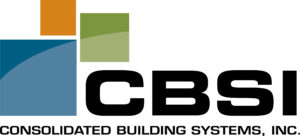Make a decision!
Sara Suter, Vice President
Through my leadership journey I have noticed a consistent question when working with individuals who are up and coming leaders, and that is how do I get my leadership to make a decision on a critical item? It seems like everyone has business ideas or solutions but not many individuals are willing to make a tough business decision without months of meetings. Today we are going to unravel the mystery of how to get a leader to make a timely decision and what information must be provided to move the project forward. The power of information is critical here along with the ability to have courageous conversations in order to identify the most effective solution. If you follow the simple formula of outlining the timeframe, cost and impact to the organization you can effectively move to a decision with your leadership team.
What is the timeframe?
Before you take anything to a leader you must know the timeframe for when a decision needs to be made. If you bring a problem to a leader that doesn’t have an immediate impact on the organization the odds are high that it will not be addressed as it is a low priority. Gather the information on the project and prepare a schedule if necessary, to reflect when a decision needs to be made and the potential delays on the project if the leadership does not take action.
What is the cost?
As we all know it all comes down to the money. Decisions are easy if they don’t have a cost impact and most leaders will address those quickly. The challenge comes when the project has a significant cost impact to the organization. When presenting a project or need to a leader you must be clear and honest about the cost. This may be hard as the cost of doing business is rising and leaders are challenged with doing more with less. To get a leader to move on your project you must align the cost with the timeframe so they can accurately forecast the cost of the impact for the current year or over many years if it is a long term expense like real estate. Bring all your cost impacts to the table to allow the leader to make a confident and informed decision about whether this is a realistic expense in the timeframe outlined.
What is the impact?
Once you have outlined the timeframe and cost you need to provide a realistic impact to the organization if the project is not funded. For example, if you are relocating to a new location and need to purchase $500,000 worth of new equipment for production, the impact to the organization would be significant if you were paying rent on the location but couldn’t move in for 3 months because the expense was not approved in time. You now have a direct impact to the organization with an unused asset, a delay in your move, and installation challenges that impact your employees’ abilities to effectively work in their new location. An informed leader will always make a decision that is in the best interest of the organization.
It takes courage to be a successful leader and we want you to know that with the right tools these courageous conversations do get easier over time as you build upon your leadership skills.
For more insight into our servant leadership journey check out our other blogs and resources at https://cbsisandiego.com/category/blog/.

